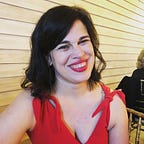Time Capsule: Like Sands Through the Hourglass (Week 3)
In the past two weeks, I’ve curated some items for a time capsule and constructed a vessel. This week, it’s time to imagine what it will look like when the capsule is unearthed over a century from now.
Finding a Form
When I got to this part of the assignment I was immediately inspired by Amie Kaufman and Jay Kristoff’s series The Illuminae Files. This series explores a disaster from the perspective of two teenagers in the form of emails, interview transcripts, and memos.
The series has three volumes, each of which explores a different relationship around the same central disaster. The series does more than just translate the story into a cross-genre narrative, this book has some amazing layouts that can really enhance the story.
I’ve been interested in seeing how graphics can work with large blocks and thought this was a prime chance to explore the medium.
Setting the Scene
When imagining how my box would be unearthed I envisioned a report and field notes with charts and photographs.
For my premise, I decided to imagine aliens finding the time capsule or humans that were far enough from the Earth’s culture to not understand all the nuance of what is happening in our world.
Once this was decided I also had a lot of other questions about who would be looking at this time capsule. The first being, how would they understand the time capsule?
To attempt to decide this, I am going to rely on a sci-fi storytelling trope where all the aliens out in the universe speak English. Explaining this away in science fiction means often just adding a translation conceit. Examples include the Tardis in Doctor Who automatically translating speech for anyone who travels with it and Farscape’s translator microbes injected into the base of the character’s skull.
Creating a Character (Or Not)
With that basic premise decided, I tried to figure out how to best proceed before writing. Normally, I would start with a character and go from there because I've always thought stories were best when the characters were in the driver’s seat.
I started attempting to create a character that would be giving this report, but the more I thought about it, the more I didn’t want to know about the character. The thing that should really be at the center here is the artifact, my tarot cards, so I let them drive the narrative.
This resulted in the person delivering the report being reduced to an ID number.
As I started writing their initial observations of the box I described as my vessel, I started to think about what would draw her in and decided to add a voice element.
Since my box was meant to include a space for a protection charm, there would be space to include a drive to store a few digital files, although that assumes that the drive would last 100 years and that whoever found it had the ability to read it.
Laying Out the Work
After I wrote up about 1,000 words of observations about the box, I decided it was time to start working on the layouts. I knew I wanted a sci-fi theme since I was imagining something a little more futuristic.
I looked for a screen layout that I could use to prototype a sci-fi interface and I found this Adobe Stock template that I was able to turn on its side and rotate.
Since I still haven’t created the box, I started working out a way to approximate what the box would look like. So I used a series of clipart elements and stock photos as stand-ins.
To create the illustrations of the open box I used this USB clipart and the jar from a Wiccan Adobe Stock clipart.
Laying out the panels involved a lot of text-wrapping and manipulation, as well as the use of a monospace font. I had considered a sans serif font, but I liked the somewhat nostalgic look that had spacing like an old typewriter.
Final Product
The final product ended up being seven panels, and it definitely has the potential to grow.
Improvements I Wish to Make
- It occurred to me after looking at this that I should have added an attachment graphic.
- In an expansion of this, I would like to add an audio element and make this more interactive. Could potentially be converted into a videogame or visual novel.
- If I kept this as a PDF, I would want to make it accessible.
